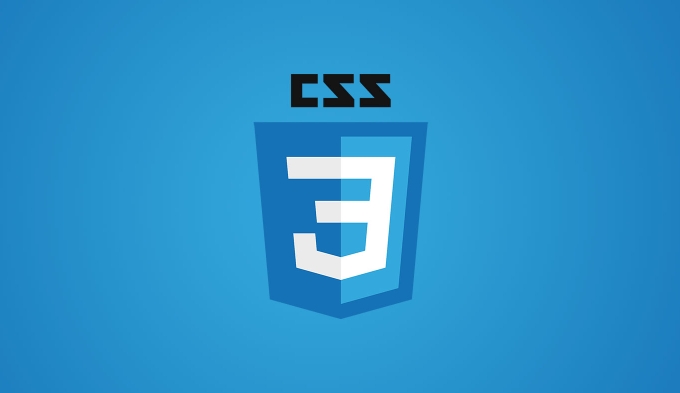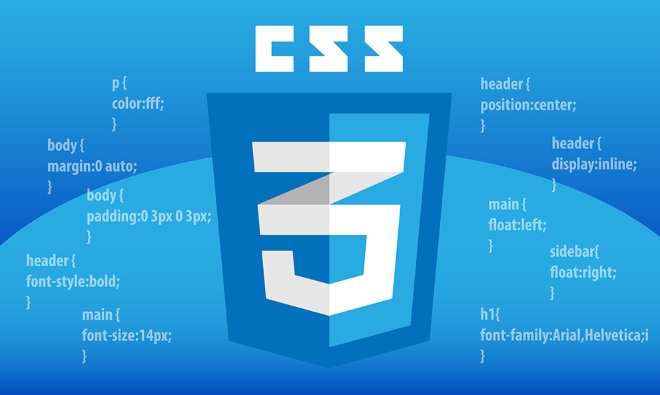CSS Blend Modes realizes color fusion between elements through mix-blend-mode and background-blend-mode attributes to enhance visual hierarchy. 1. mix-blend-mode controls the mixing method of elements and the content below; 2. background-blend-mode controls the mixing between multiple background layers; 3. Common modes such as multiply, screen, and overlay can be used for background overlay, text effects and card light and shadow effects; 4. Pay attention to compatibility, performance impact, color control and hierarchical structure issues when using it.

CSS Blend Modes is a tool that makes web design more creative, especially suitable for creating interfaces with rich visual layers and unique styles. They act like a blending mode in Photoshop, allowing elements to "fusion" in different ways rather than simply overwriting or overlaying.

If you want to add some visual impact when doing background layers, card components, or text effects, Blend Modes will be a good choice.

How to use CSS Blend Mode
CSS provides mix-blend-mode and background-blend-mode properties to control mixed behavior.
-
mix-blend-mode: Used to control how an element is mixed with its content below. -
background-blend-mode: Used to control how multiple background layers of an element are blended.
The basic writing method is as follows:

.element {
mix-blend-mode: multiply;
}or:
.background-element {
background-image: url(image1.jpg), url(image2.jpg);
background-blend-mode: screen;
} Common blend mode types include normal , multiply , screen , overlay , darken , lighten etc. Each mode handles colors differently and has very different effects.
Common usage and design scenarios
Background Image Overlays
When you have an image as the background and want to add a layer of gradient or color mask on it, you can use background-blend-mode to achieve a soft transition.
For example:
.overlay-box {
width: 100%;
height: 300px;
background-image: linear-gradient(to bottom, rgba(255, 0, 0, 0.5), rgba(0, 0, 255, 0.5)), url(background.jpg);
background-blend-mode: overlay;
}This method is very suitable for the hero area of ??the website, making the picture more layered while maintaining the text readability.
Text on Backgrounds
Use mix-blend-mode to allow text to automatically adjust the display effect according to the color of the background below. For example, set the text to white and add mix-blend-mode: difference; , the text will brighten on a dark background and dark on a light background.
.blend-text {
color: white;
mix-blend-mode: difference;
}This technique is often used in art pages or title animations, and the visual effect is very eye-catching.
Light and shadow effects in card components
If you are doing a card layout and want it to look more textured, you can use a translucent mask layer with multiply or screen mode to simulate shadows or highlights.
For example:
.card {
position: relative;
}
.card::after {
content: '';
position: absolute;
top: 0;
left: 0;
width: 100%;
height: 100%;
background: radial-gradient(circle at center, rgba(255,255,255,0.4), transparent 70%);
mix-blend-mode: multiply;
}This will make the center of the card a bit similar to the spotlight and enhance the sense of interaction.
Notes and FAQs
- Compatibility : Blend modes are generally supported by modern browsers, but may be completely invalid in older browsers such as IE. If the project needs to be compatible with old systems, it is best to have a fallback solution.
- Performance Impact : Overuse of blend mode can cause a rendering burden, especially in a large number of dynamic elements.
- Color control : The effect of blend mode is greatly affected by the colors of the upper and lower layers. It is recommended to try several color combinations during debugging.
- Hierarchy : When using
mix-blend-mode, it will affect the way the element and all its child elements are mixed with the content behind it. Pay attention to check whether it affects other parts.
Basically that's it. CSS Blend Modes are not complicated but easy to ignore. After mastering several common modes, you can add many highlights to your daily design.
The above is the detailed content of Working with CSS Blend Modes for creative design. For more information, please follow other related articles on the PHP Chinese website!

Hot AI Tools

Undress AI Tool
Undress images for free

Undresser.AI Undress
AI-powered app for creating realistic nude photos

AI Clothes Remover
Online AI tool for removing clothes from photos.

Clothoff.io
AI clothes remover

Video Face Swap
Swap faces in any video effortlessly with our completely free AI face swap tool!

Hot Article

Hot Tools

Notepad++7.3.1
Easy-to-use and free code editor

SublimeText3 Chinese version
Chinese version, very easy to use

Zend Studio 13.0.1
Powerful PHP integrated development environment

Dreamweaver CS6
Visual web development tools

SublimeText3 Mac version
God-level code editing software (SublimeText3)

Hot Topics
 What is 'render-blocking CSS'?
Jun 24, 2025 am 12:42 AM
What is 'render-blocking CSS'?
Jun 24, 2025 am 12:42 AM
CSS blocks page rendering because browsers view inline and external CSS as key resources by default, especially with imported stylesheets, header large amounts of inline CSS, and unoptimized media query styles. 1. Extract critical CSS and embed it into HTML; 2. Delay loading non-critical CSS through JavaScript; 3. Use media attributes to optimize loading such as print styles; 4. Compress and merge CSS to reduce requests. It is recommended to use tools to extract key CSS, combine rel="preload" asynchronous loading, and use media delayed loading reasonably to avoid excessive splitting and complex script control.
 How to use Lotties in Figma
Jun 14, 2025 am 10:17 AM
How to use Lotties in Figma
Jun 14, 2025 am 10:17 AM
In the following tutorial, I will show you how to create Lottie animations in Figma. We'll use two colorful designs to exmplify how you can animate in Figma, and then I'll show you how to go from Figma to Lottie animations. All you need is a free Fig
 Breaking Boundaries: Building a Tangram Puzzle With (S)CSS
Jun 13, 2025 am 11:33 AM
Breaking Boundaries: Building a Tangram Puzzle With (S)CSS
Jun 13, 2025 am 11:33 AM
We put it to the test and it turns out Sass can replace JavaScript, at least when it comes to low-level logic and puzzle behavior. With nothing but maps, mixins, functions, and a whole lot of math, we managed to bring our Tangram puzzle to life, no J
 External vs. Internal CSS: What's the Best Approach?
Jun 20, 2025 am 12:45 AM
External vs. Internal CSS: What's the Best Approach?
Jun 20, 2025 am 12:45 AM
ThebestapproachforCSSdependsontheproject'sspecificneeds.Forlargerprojects,externalCSSisbetterduetomaintainabilityandreusability;forsmallerprojectsorsingle-pageapplications,internalCSSmightbemoresuitable.It'scrucialtobalanceprojectsize,performanceneed
 Does my CSS must be on lower case?
Jun 19, 2025 am 12:29 AM
Does my CSS must be on lower case?
Jun 19, 2025 am 12:29 AM
No,CSSdoesnothavetobeinlowercase.However,usinglowercaseisrecommendedfor:1)Consistencyandreadability,2)Avoidingerrorsinrelatedtechnologies,3)Potentialperformancebenefits,and4)Improvedcollaborationwithinteams.
 CSS Case Sensitivity: Understanding What Matters
Jun 20, 2025 am 12:09 AM
CSS Case Sensitivity: Understanding What Matters
Jun 20, 2025 am 12:09 AM
CSSismostlycase-insensitive,butURLsandfontfamilynamesarecase-sensitive.1)Propertiesandvalueslikecolor:red;arenotcase-sensitive.2)URLsmustmatchtheserver'scase,e.g.,/images/Logo.png.3)Fontfamilynameslike'OpenSans'mustbeexact.
 CSS Counters: A Step-by-Step Tutorial with Examples
Jun 12, 2025 am 10:31 AM
CSS Counters: A Step-by-Step Tutorial with Examples
Jun 12, 2025 am 10:31 AM
CSSCounters is a tool for creating automatic numbers. 1. Basic usage: define and operate counters through counter-reset and counter-increment, such as "SectionX." before h2. 2. Advanced usage: Use nested counters to create complex numbers, such as chapter and section numbers. 3. Notes: Ensure the counter is reset correctly, optimize performance, and simplify counter logic. 4. Best practice: clear naming, define counters in CSS, and use counter-increment and counter-reset reasonably.
 What is Autoprefixer and how does it work?
Jul 02, 2025 am 01:15 AM
What is Autoprefixer and how does it work?
Jul 02, 2025 am 01:15 AM
Autoprefixer is a tool that automatically adds vendor prefixes to CSS attributes based on the target browser scope. 1. It solves the problem of manually maintaining prefixes with errors; 2. Work through the PostCSS plug-in form, parse CSS, analyze attributes that need to be prefixed, and generate code according to configuration; 3. The usage steps include installing plug-ins, setting browserslist, and enabling them in the build process; 4. Notes include not manually adding prefixes, keeping configuration updates, prefixes not all attributes, and it is recommended to use them with the preprocessor.






